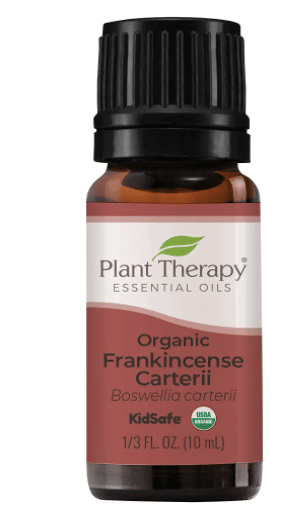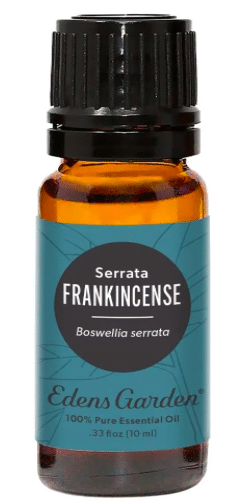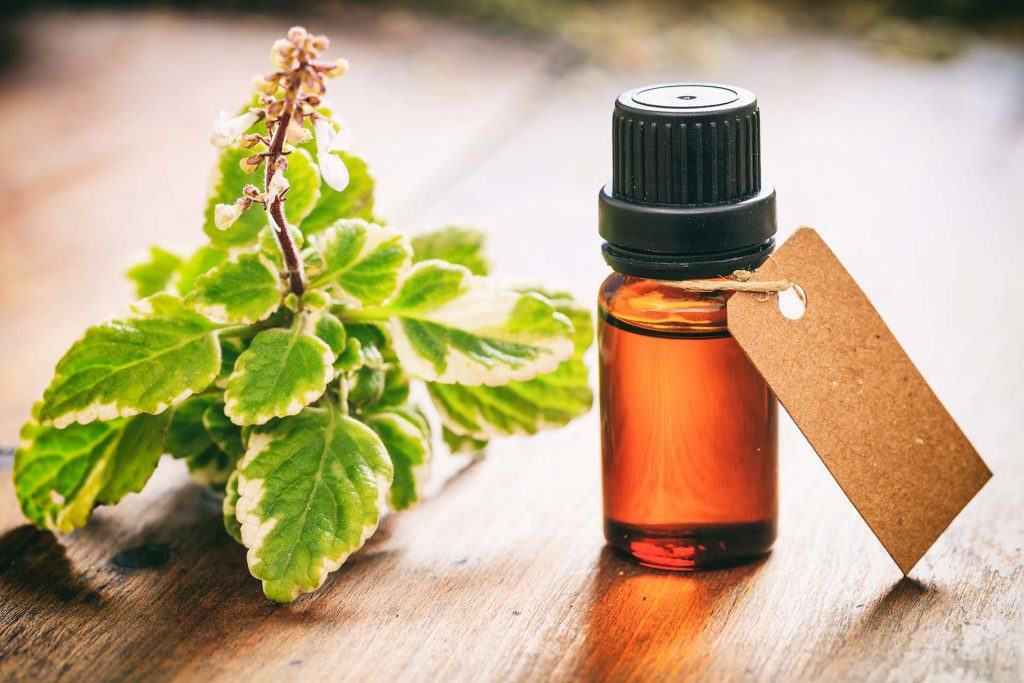Table of Contents
What Is Frankincense Essential Oil?
Whether you are new to the world of essential oils or not, frankincense is one that almost everyone has at least heard of.
Some of us may remember the story in the bible about Jesus as a newborn and the three wise men that brought him some frankincense and myrrh. The story still leaves the question as to what frankincense is, where it came from, and what its uses are.
In this article, we will dive into the ancient history of frankincense. Its incredible uses, our favorite brands, and the multiple ways you can incorporate it into your life.
Where Does Frankincense Come From?
Frankincense comes from the sap of the Boswellia tree found in Oman, Yemen, and the horn of Africa, including Somalia and Ethiopia.
The most sought-after frankincense is from the Boswellia Sacra tree, mostly found in Oman. Another tree that produces frankincense is Boswellia Serrata, which is native to India and Pakistan.
History of Frankincense
When people think of frankincense, they might think of the book of Matthew in the New Testament as one of the gifts given to newborn Jesus.
However, frankincense has been traded for commerce and healing properties for thousands of years. Many believe that frankincense has been traded in the Middle East and North Africa for over 5,000 years. There are records of Babylonians, Assyrians, and Phoenicians, all having used the essence in a variety of ways.
How is Frankincense Harvested & Extracted?
The interesting thing about gathering the frankincense sap from the trees is that it takes two weeks to collect! First, a small “wound” or hole is punctured in the tree, but the first sap is not collected right away. The first bit of sap that comes through is not collected as it is thought to clear the impurities in the tree.
After the initial sap has passed through, the hole is enlarged. Then the sap slowly comes out of the tree until it is dried and ready to be collected in about two weeks.
After it is harvested, steam distillation is the common extraction method used to turn frankincense extract into frankincense essential oil.
Health Benefits of Frankincense Oil
Anti-Inflammatory
One of the highlight properties of frankincense essential oil is its anti-inflammatory property. This particular property is significant as so many conditions, diseases, and illnesses stem from inflammation, or inflammation is part of the symptoms a person is experiencing.
Anti-Inflammatory Research
Several studies have shown that boswellic acid found in frankincense potentially aids in reducing inflammation and in the prevention and treatment of serious diseases such as arthritis, asthma, chronic pain, chronic bowel diseases, gingivitis, and some cancers.
While there have not been any studies conducted on living patients with cancer, there are several studies done on cancer cells and the positive effects frankincense had on cancerous cells.

Cancer Research
A 2015 study suggests that frankincense oil may cease the growth of breast cancer cells and even kill off some cancerous cells. The researchers found these results promising but ultimately concluded that more research needs to be done.
Researchers in a 2009 study looked at frankincense oil specifically derived from the Boswellia carteri species and examined the oil’s anti-tumor activity on bladder cancer cells. The findings indicated that when administered, the oil appears to differentiate between healthy and cancerous cells. Additionally, it was also found that frankincense may suppress cancer cell viability.
Disclaimer
There are many other examples of scientific research surrounding this king of essential oils. However, it’s worth mentioning that there have not been any studies done on live humans living with cancer and using frankincense as a treatment.
Anti-Microbial
There are a number of studies that note the anti-microbial properties of frankincense essential oil against various microorganisms like fungi and various bacterial strains.
One study looked at the antimicrobial activity of three samples of frankincense essential oil in combination with two samples of myrrh essential oil and sweet myrrh. The findings indicated that frankincense oils, in combination with myrrh oils, were synergistic, meaning that they worked well together against the pathogens tested. This is an encouraging finding as it shows the enhanced efficacy of these oils when used in combination against various pathogens.
Best Quality Frankincense Oil
The quality of frankincense is identifiable by its color. To reiterate, the oil that is silver in color with a slightly green hue is going to be your most potent oil, as well as your most expensive. The more common and cost-effective frankincense is going to have a brown, yellowish hue.
Searching for the best brand of essential oils can be tricky. Essential oils are not regulated and do not have a set of industry standards.
GC/MC Testing
One crucial factor you must consider when searching for the best essential oils is the quality control testing of that specific oil. This is where a test called gas chromatography and mass spectrometry, also known as GC/MC testing, comes in.
GC/MC testing is the chemical analysis of the components in essential oils. This analysis identifies the percentage of each component in each essential oil. Finding a brand that does third-party testing is ideal.
Top Picks List
Plant Therapy
Plant Therapy oils are almost always on our top pick lists for many different oils. This is because their oils are steam distilled, most are certified organic, GC/MC tested, accessible to all, and affordable.

We love this particular oil as it is a certified organic frankincense essential oil, which is not always easy to find, it is affordable, and many reviewers rave about its crisp and earthy aroma.
Eden’s Garden
Eden’s Garden oils are also always a favorite because their oils are also high quality and affordable. The company also has great customer service and many positive customer reviews.

Eden’s Garden has a couple of different frankincense oils. The one we love the most is from the Boswellia Serrata species because it has that earthy frankincense scent without being too overwhelming.
Disclaimer
As always, be an advocate for yourself and your health. Consult with your doctor prior to using any essential oils as a support role in your health.
How to Use Frankincense Oil
Since frankincense has such a fantastic reputation for combating inflammation, using it topically is an option when healing wounds, addressing scars and stretch marks, or dealing with sciatica and back pain.
Topical Application
When applying any essential oil topically, it is vital to dilute the essential oil with a high-quality carrier oil such as fractionated coconut oil. Another option is to use grapeseed oil or jojoba oil.
Frankincense Aromatherapy
Aromatherapy is probably the most popular method people use when seeking the healing benefits of frankincense.

When addressing coughs, congestion, and allergies, you can inhale gently straight from the bottle.
You can also combine a few drops of frankincense with peppermint and lavender oil to your essential oil diffuser to enjoy the healing and clarifying benefits.
Frankincense Incense
If you want a unique incense burning experience outside of premade incense sticks, you can purchase frankincense in its resin form.
Methods of Burning
Some traditional ways of burning frankincense resin can produce a lot of smoke.
A safer way to do this is to use an aromatherapy/essential oil warmer, a little vegetable oil, a few nuggets of frankincense resin, a tea-light candle, and a lighter.
All you need is to put around two teaspoons of vegetable oil (depending on the size of your warmer), two or three nuggets of resin dropped in the oil, and light the tea-light candle underneath, and you are all set with frankincense without the smoke!
Myrrh and Frankincense Essential Oil
Frankincense, myrrh, and gold were the gifts given to Jesus as a newborn. This might be where some of us have had at least an introduction to hearing about these amazing essential oils.
It was also recorded that Jesus was offered wine and myrrh at the crucifixion for pain management.
Harvesting
Myrrh is harvested much like frankincense and is typically collected as a resin and burned as incense.
It is also made into essential oil and is often paired with frankincense for its similar and complementary healing properties.
Frequently Asked Questions
What does frankincense oil smell like?
Most people describe the scent of frankincense oil to be a spicy scent with a hint of lemon along with a pine/wood smell.
What is frankincense essential oil good for?
Frankincense is most commonly used in Chinese medicine, Ayurveda, and aromatherapy practices. It is known to aid in inflammatory diseases such as arthritis, asthma, chronic pain, etc.
What are the side effects of Frankincense Oil?
Currently, frankincense is considered safe for use in adults. It is recommended frankincense be diluted with a carrier oil as it may cause minor skin irritation. It should not be used in women who are pregnant or nursing.
The Wonderful World of Frankincense
Frankincense is called the “king of the oils” for a reason. Outside of myrrh, it is one of the oldest essential oils that has been traded, used, and sought after.
We hope this article has brought a little history, a few new facts, and maybe even a little relief into whatever may be ailing you today.
Be well and oil on, friends!

